How to Keep Deer Out of Your Garden
- February 7, 2025
- 0 comment
Deer are a constant challenge for gardeners, turning thriving vegetable patches and flower beds into personal feeding stations. If they’ve discovered your yard, they will return repeatedly unless you take action. The key to stopping them isn’t a single solution but a combination of strategies that make your garden less inviting and more difficult to access. Whether you want a natural approach, deterrents, or a physical barrier, understanding their behavior and using the right tactics will help you protect your plants without harming wildlife.
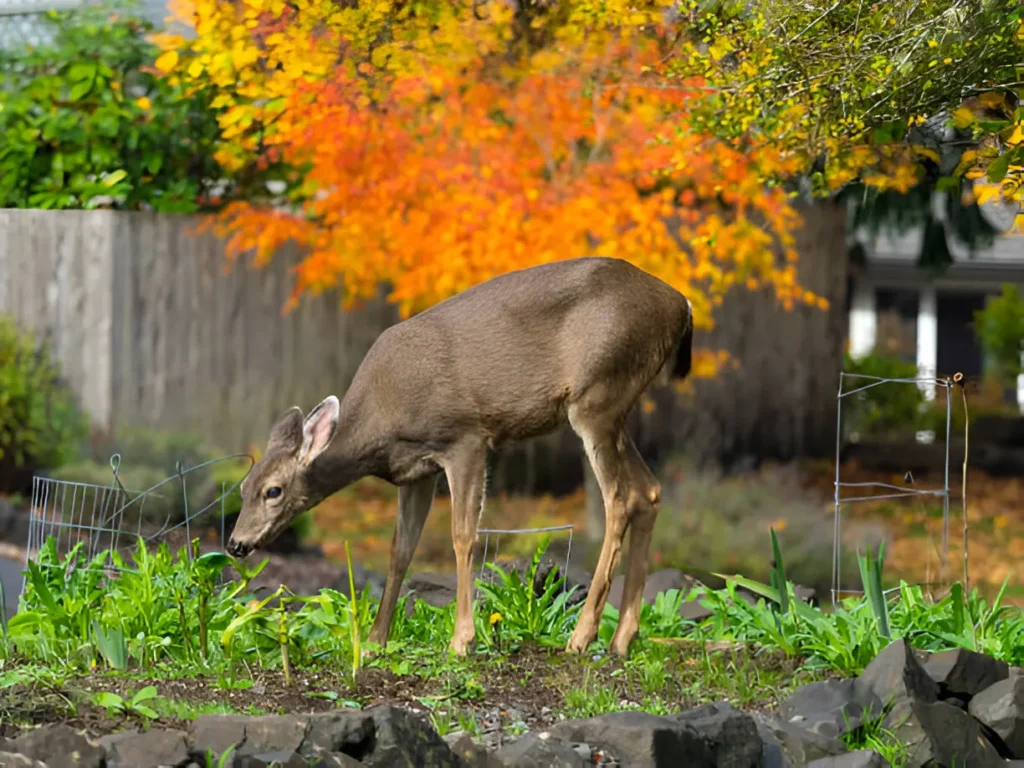
Why Deer Are Targeting Your Garden
If deer have found their way into your yard, it’s because they see it as an easy, reliable food source. Gardens offer a mix of nutrient-rich plants, soft foliage, and fruiting trees that are often more appealing than the wild vegetation they typically eat. If you’re growing hostas, roses, tulips, strawberries, or leafy greens, deer will be particularly drawn to your property.
Beyond food, cover and safety play a role in why they keep coming back. If your garden is near wooded areas, tall grass, or shrubs that provide shelter from predators, deer will feel more comfortable lingering. Unlike open fields, a garden offers security, making it a favored feeding spot. Once they establish a route through your property, they will return night after night unless you actively break their routine and discourage them from seeing your yard as a free meal.
How Effective Is Fencing for Keeping Deer Out?
One of the most reliable solutions for stopping deer is a well-built fence, but not all fences work. Many gardeners install short barriers, thinking they will be enough, only to find that deer leap over them with ease. A standard garden fence at four or five feet high will do little to stop a full-grown deer, which can jump as high as six to eight feet without much effort.
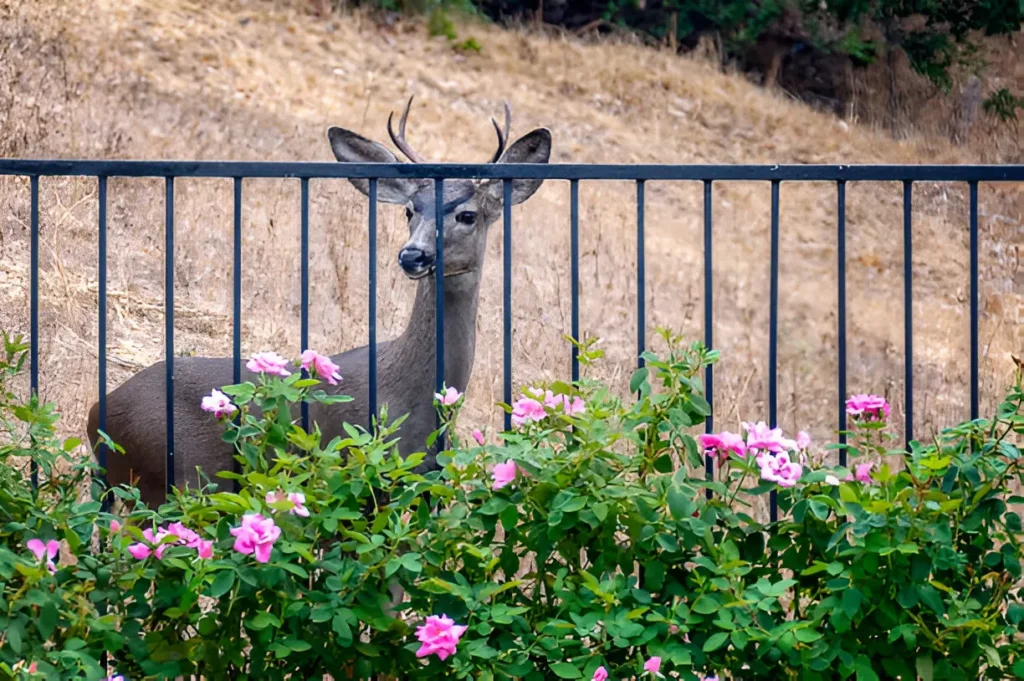
To create a truly deer-proof fence, height is crucial. The best option is a fence at least eight feet tall, as this is beyond what most deer can clear. If a full-height fence isn’t feasible, an alternative approach is to angle it outward at 45 degrees, making it more difficult for deer to attempt a jump. Another option is a double fence system, where two shorter fences are placed a few feet apart. Because deer have poor depth perception, they struggle with the idea of clearing two obstacles and often won’t attempt the jump at all.
In areas with high deer populations, electric fencing can be another effective deterrent. A single strand of electrified wire, placed at about three feet high, delivers a mild shock that teaches deer to stay away. While fencing is one of the best long-term solutions, not everyone can install a full enclosure, which is why many gardeners combine fencing with deterrents and strategic planting.
Which Plants Naturally Repel Deer?
Although deer will eat almost anything when food is scarce, they tend to avoid strong-smelling, bitter, or prickly plants. If you want to naturally deter them, consider incorporating these varieties into your landscape. Herbs like lavender, rosemary, mint, and oregano are excellent choices, as their strong scent overwhelms deer’s sensitive noses. Flowers like daffodils, marigolds, and foxgloves are also unappealing, as they contain toxins or textures that deer don’t like.
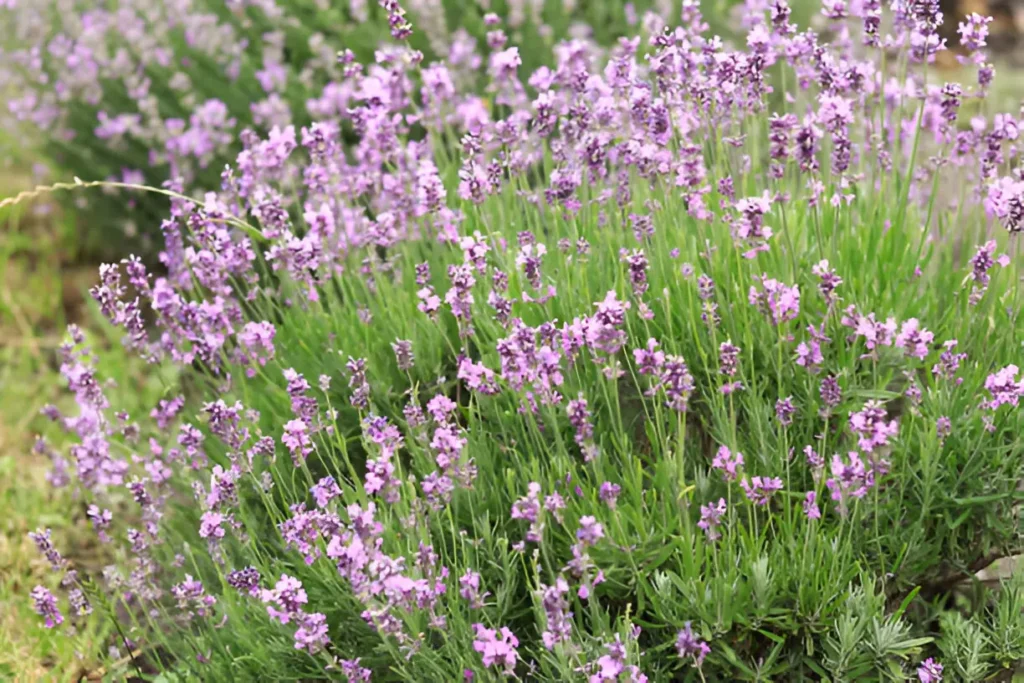
Beyond individual plants, strategic placement can enhance their effectiveness. Creating a border of deer-resistant plants around the most vulnerable parts of your garden makes it harder for deer to access your vegetables and delicate flowers. Mixing these deterrent plants among deer-favorite plants can also reduce damage, as they disrupt the scent trail that typically draws deer in.
Do Motion-Activated Sprinklers and Deterrents Work?
Deer are easily startled, which is why motion-activated deterrents can be an effective way to discourage them from settling in your yard. A sudden burst of water from a motion-activated sprinkler is often enough to send them running. These devices not only help keep deer away but also have the added benefit of watering your plants in the process.
Other deterrents rely on sound and light to create an unpredictable environment. Ultrasonic devices emit high-frequency noises, which are irritating to deer but go unnoticed by humans. Solar-powered flashing lights that resemble the glowing eyes of predators can also be effective, particularly at night when deer are most active.
For these deterrents to be successful, they must be used dynamically. If left in the same place for too long, deer may eventually realize that they pose no real threat. Rotating their positions every few weeks keeps deer on edge and prevents them from learning how to ignore them.
What Are the Best Natural Deer Repellents?
Since deer rely heavily on smell and taste to find food, using natural repellents can help make your plants less appealing. One of the most well-known deterrents is an egg-based spray, which mimics the scent of decay. This is highly effective, as deer associate the smell with rotting food and instinctively avoid it. Another strong-smelling deterrent is garlic and chili spray, which coats plants in an unpleasant taste that deer won’t enjoy.
Predator scents can also play a role in keeping deer at bay. Spraying coyote or fox urine around the perimeter of your garden can trick deer into thinking that a predator is nearby, encouraging them to look for food elsewhere. Another simple yet effective method is hanging bars of Irish Spring soap in trees or placing human hair or dog fur around the garden. These unfamiliar scents can confuse deer and make them uneasy about entering your space.
While these repellents can work well, they need to be reapplied regularly, especially after rain. To maximize effectiveness, it’s best to alternate between different repellents so deer do not become accustomed to a single scent over time.
How Can You Make Your Yard Less Inviting to Deer?
If your goal is to prevent deer from seeing your yard as an easy feeding ground, the best approach is to remove anything that attracts them. Fruit trees and vegetable patches should be maintained so that no fallen fruit or produce is left out overnight. Ripe fruits and vegetables act as a magnet for deer, so regular harvesting helps reduce their interest.
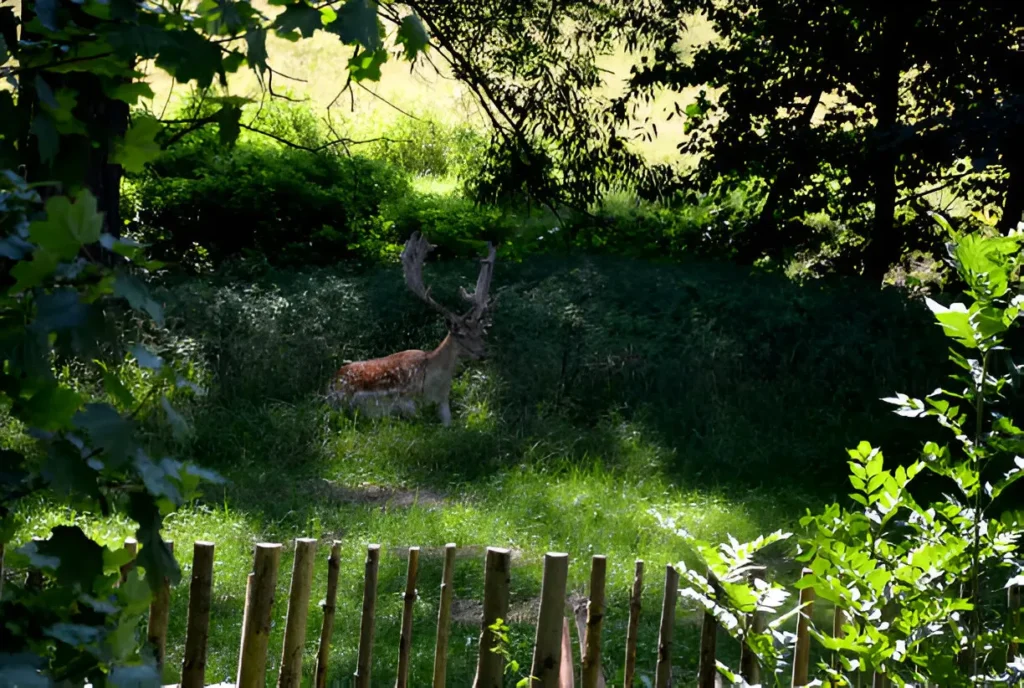
Hiding spots also make a difference. If your yard has tall grass, thick shrubs, or wooded areas, deer may see it as a safe place to feed. Keeping hedges neatly trimmed and mowing grass regularly will make your space feel more open, which deer tend to avoid. Removing water sources such as birdbaths and ponds can also discourage them from lingering.
By making your yard less appealing, you send a message that it is not an easy place to feed, forcing deer to look elsewhere for food.
Will Deer Eventually Get Used to Deterrents?
Deer are incredibly adaptive, and if they realize a deterrent isn’t a real threat, they will start ignoring it. This is why a single method, no matter how effective at first, may lose effectiveness over time. The best way to prevent this is by rotating deterrents, changing repellent formulas, and repositioning scare devices regularly.
A multi-layered approach works best. Fencing should be the primary defense, but combining it with plants deer dislike, motion-activated devices, and scent-based deterrents will provide the most reliable results. By continuously modifying your strategies, deer won’t be able to settle into a predictable routine in your yard.
How to Keep Deer Out for Good
Stopping deer from invading your garden isn’t about a single fix it’s about creating an environment where they don’t feel comfortable. Fencing remains the best long-term solution, but adding deer-resistant plants, natural repellents, and motion-activated deterrents creates multiple barriers that work together. Keeping your yard free of fallen fruit, dense hiding spots, and water sources further reduces its attractiveness.
When used consistently, these methods can significantly reduce the chances of deer making your garden part of their feeding route. Over time, they will learn that your yard isn’t worth the effort and will seek food elsewhere.
Conclusion
Keeping deer out of your garden requires a combination of strategies rather than relying on just one method. Fencing remains the most effective solution, but if a tall barrier isn’t an option, there are plenty of natural and practical deterrents to try. Motion-activated sprinklers, deer-resistant plants, scent-based repellents, and scare tactics can all discourage deer from treating your garden as a free meal.
For long-term success, the key is to rotate deterrents and remove attractions like fallen fruit and overgrown vegetation. Over time, deer will learn that your yard is too much trouble and will move on to easier feeding grounds. By staying consistent and adjusting your approach as needed, you can protect your plants and maintain a beautiful garden free from unwanted visitors.
FAQs
1. What smells do deer hate the most?
Deer have sensitive noses and dislike strong scents such as garlic, peppermint, lavender, and predator urine (coyote or fox). Spraying egg-based deer repellent or hanging bars of Irish Spring soap around the garden can also keep them away.
2. What is the most effective way to keep deer out of my garden?
The most effective way to keep deer out is to install an 8-foot fence, as deer struggle to jump anything taller than that. If fencing isn’t possible, using motion-activated sprinklers, ultrasonic repellents, deer-resistant plants, and strong-smelling sprays can provide good protection.
3. Will coffee grounds keep deer away?
Coffee grounds have a strong scent, which may help deter deer temporarily, but they are not a guaranteed solution. For better results, try combining coffee grounds with other deterrents like garlic, chili powder, or egg-based sprays.
4. Do motion-activated sprinklers really work against deer?
Yes, motion-activated sprinklers are one of the most effective deterrents for deer. The sudden burst of water startles them and interrupts their routine, making them less likely to return. However, for best results, sprinklers should be moved periodically to prevent deer from adapting.
5. How can I protect my plants without using a fence?
If fencing isn’t an option, you can protect your plants by planting deer-resistant flowers and herbs, using scent-based deterrents like predator urine or garlic spray, and installing motion-activated devices. Covering individual plants with netting or floating row covers can also provide an extra layer of protection.

Joel Cunningham
Forestry AuthorI'm Joel Cunningham, an expert in pruning and weed management with over a decade of experience. My skills are rooted in formal training and extensive practice, focusing on advanced pruning techniques and efficient weed control. I'm known for my quality work, precision, and deep understanding of plant health and soil dynamics. My contributions extend to educational initiatives where I share sustainable practices and advice, establishing myself as a reliable and authoritative figure in the gardening community.

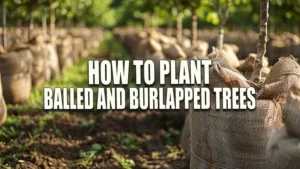









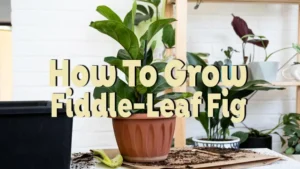

Leave your comment